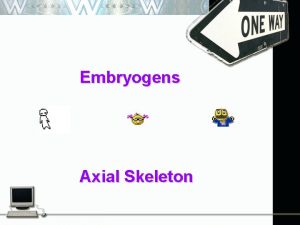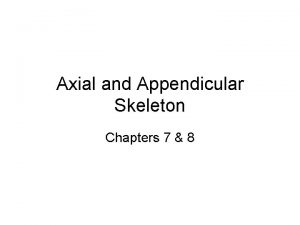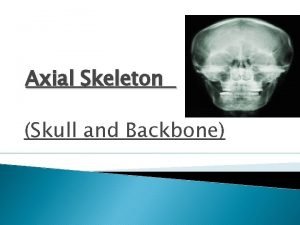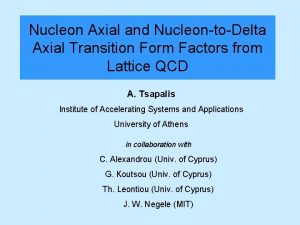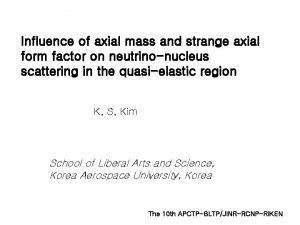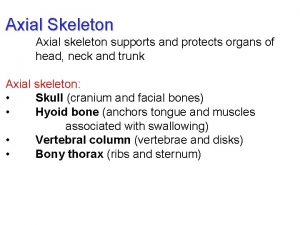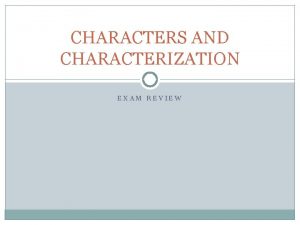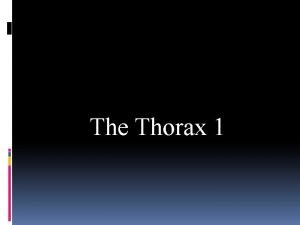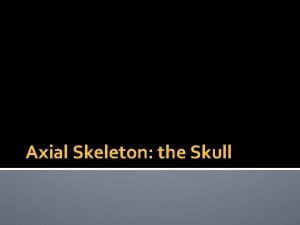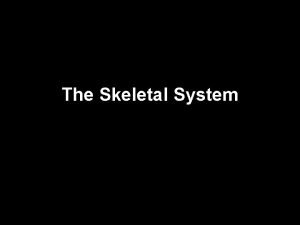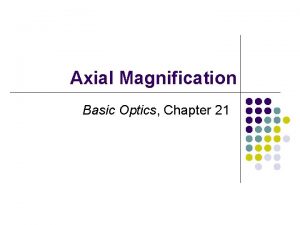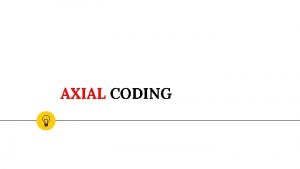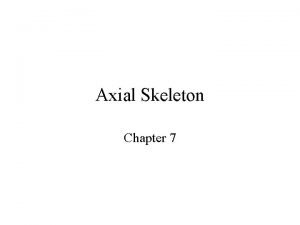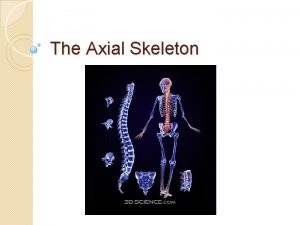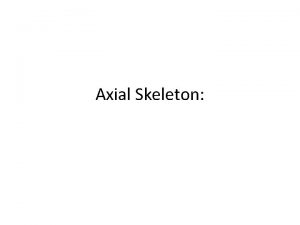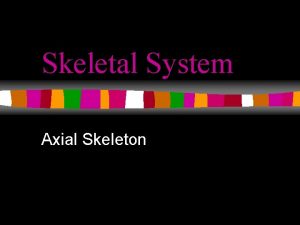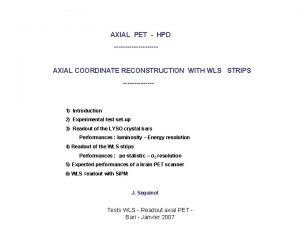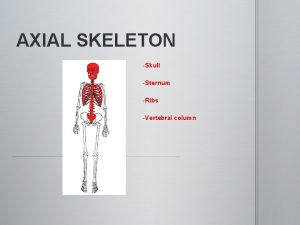Axial and transverse stressstrain characterization of the EU































- Slides: 31

Axial and transverse stress–strain characterization of the EU dipole high Jc RRP Nb 3 Sn strand A. Nijhuis, Y. Ilyin, W. Abbas, H. J. G. Krooshoop, W. A. J. Wessel, Y. Miyoshi, L. Feng, E. P. A. van Lanen Geneva, 20 May 2008

Introduction Strain sensitivity Nb 3 Sn strands / ITER CICC application: Øevaluate sensitivity various applied strands Øcabled conductor design (limiting peak strains). CICC: axial strain, periodic transverse bending strain and periodic contact stress, axial and transverse stiffness. Besides pacman disc spring for axial Ic(e) measurements, we used the TARSIS test set-up with probes for bending, contact stress and stiffness (axial & transverse). We concentrate on results of high Jc OST RRP type of strand (EU Dipole strand, EUDIPO) and make a few comparisons with ITER type strands. Relation cabling pattern and performance degradation in CICC.

Ic (VI) and strand deformation in TARSIS test set-up with probes for bending, contact stress and stiffness (axial & transverse). Bending between contact points, various wavelengths. Reduced Ic vs force for SMI strand for 3 wavelengths. Crossing strands for contact stress characterisation. Ic vs stress for crossing strands, 11 T and 12 T for EM-LMI strand. Strand tensile stress-strain tests at various temperatures (participation in VAMAS). Stress-strain curve for EM-LMI (TFMC) strand

OST RRP Nb 3 Sn Dipole strand Jc>2060 A/mm 2 Ternary Nb + Nb-47 Ti Æ = 0. 81 mm Cu: non. Cu= 1 91 x 84 stack design billet number 8712 Courtesy of ENEA A Nijhuis, Y Ilyin and W Abbas, ‘Axial and transverse stress–strain characterization of the EU dipole high current density Nb 3 Sn strand’ Supercond. Sci. Technol. 21 No 6 (June 2008) 065001 (10 pp)

Uni-axial strain & Ic (Pacman) Temperature variations by placing the Pacman spring under an insulator cup, creating a helium gas volume. With heaters and thermometers arranged symmetrically the temperature can be balanced within ± 20 m. K. Strand soldered on perimeter disc shaped spring Standard procedure VI curves I =1000 A, e-appl =-0. 9 to + 0. 9 % B=6 to 15 T T=4. 2 to 12 K. First we explore the compressive strain range, then B, T dependency and finally the tensile range for irreversibility

Uni-axial Ic-strain (OST-DIP) VI curves for OSTdipole strand I > 800 A, e-appl =-0. 9 to + 0. 9 % B=6 to 14 T T=4. 2 to 10 K.

Uni-axial Ic(e, B, T) (OST-DIP) Measured Ic @ 10 m. V/m OST-dipole strand Fit to Dev Strain Model, 30 data points required for description of entire Ic(B-T-e) space reversible behaviour Standard: 50 data points + irreversible tensile. OST-DIP strand degrades immediately, actually before passing zero strain (peak), red markers are after irreversible degradation

Ic(B, T) (eappl=0) Measured Ic @ 10 m. V/m OST-dipole strand Fit to Dev Strain Model

n-value (OST-DIP) n-value 10 -100 m. V/m OST-dipole strand OST-DIP strand degrades immediately when passing zero (peak) strain, the n-value is good indicator (red markers)

Axial strain irreversibility limit Irreversibility strain limit determined by intersection of two lines through n-values vs. strain for two ITER type of strands (Ic criterion 10 m. V/m, n- value between 10 and 100 m. V/m) Hitachi bronze strand with eirr=0. 63 % OST internal tin strand with eirr=0. 25 %

Strain irreversibility limit OST-DIP Ic & n-value OST-dipole strand B=12 T T=4. 2 K. Determine irreversibility strain limit by intersection of two lines through n-values vs. strain. For ODT-DIP eirr=-0. 03 %, so irreversibility appears already before intrinsic zero axial strain is reached

Uni-axial Ic(e, B, T) (OST-DIP & HEP prototype DIP) Other high Jc OST-RRP (HEP prototype DIP) strand (127 filaments) also degrades immediately when passing zero strain (peak), two samples tested. Both types high Jc OST-RRP strands, HEP prototype and Dipole (91 filaments) degrade around zero strain (peak). Different strain sensitivity, DIP strand less sensitive (materials not analysed).

Strain irreversibility limit OST-DIP For OST-DIP eirr=-0. 03 % (just before reaching peak) and prototype HEP DIP eirr= ~0. 07 %

Uni-axial Ic-strain, overview Ic(e) @ 12 T & 4. 2 K of 16 Nb 3 Sn strands High Jc OST RRP: 600 A ITER Advanced: 200 -300 A ITER Model Coil: 150 A

Uni-axial Ic-strain sensitivity, overview Normalised Ic @ 12 T & 4. 2 K High Jc OST RRP: 600 A ITER Advanced: 200 -300 A ITER Model Coil: 150 A The relative strain sensitivity for strands is defined as the slope of the reduced Ic (Ic/Ico) vs. the strain between -0. 7 % < e < -0. 3 %.

Relative Ic-strain sensitivity The average relative strain sensitivity of all strands is 1. 01 and the stdev is 0. 08. OST RRP DIP strand is least sensitive int. tin strand while the HEP prototype is one of the most sensitive. (Materials not analysed). Recent bronze is least sensitive except (VACCSMC)

Irreversibility strain limit for tested strands Low limit for high Jc OST RRP type of strands (near peak) and bronze high limit. ITER internal tin mostly between 0. 2 % and 0. 4 % (average 0. 33 % stdev 0. 11 %). (EAS strand to be measured, here based on micrography from Matt Jewell on Twente samples)

TARSIS stress-strain results, 4. 2 K Stress-strain curves on ITER and Model Coil strands at 4. 2 K: racture: 0. 9 % - 1. 2 % strain

TARSIS 4. 2 K stress-strain test OST-Dipole fracture yielding necking Strand failure just beyond 0. 5 % strain (T=4. 2 K). Cr layer removed before HT: slightly weaker stiffness. Confirmed with other strand types. All TARSIS tests are done with Cr layer removed before HT.

TARSIS bending

TARSIS bending test OST-Dipole EFDA Dipole strand: Initially following the LRL (good IF redistribution). Failure at 0. 5 % strain. Correlation between fracture strain and deviation from bending-LRL:

TARSIS bending, results Reduced Ic vs peak bending strain for several tested strands illustrating the spread in sensitivity but in particular the high sensitivity for OST-DIP (> 0. 5 %).

TARSIS crossing strands test: Ic Probe for X-strands test with periodicity 4. 7 mm and 90 angle. Reacted straight X-strands, are pressed by top plate (not visible). Ic(s) for OST-DIP strand also showing Ic release of load and irreversibility up to 50 MPa s(e) transverse stiffness

TARSIS crossing strands: Ic and n-value OST-II strand most sensitive to transverse contact stress (and binary SMI-PIT) followed by EM-LMI, OST-DIP, MIT and less sensitive HIT and EAS bronze strands. n-value OST-II degrades rapidly between 10 and 30 MPa.

Influence of cabling in CICC Is it possible to use strain sensitive strands like the high Jc OST RRP for CICC? ?

Influence of cabling in CICC April 2006 (Barcelona), a priori TEMLOP prediction postulating influence characteristic bending wavelength (Lw), no experimental data available at that time to prove it. A. Nijhuis and Y. Ilyin, ‘Transverse Load Optimisation in Nb 3 Sn CICC Design; Influence of Cabling, Void Fraction and Strand Stiffness’, Supercond. Sci. Technol. 19 (2006) 945 -962. August 2007: relation for Lw and Lp (1 st stage twist pitch) A. Nijhuis, ‘A solution for transverse load degradation in ITER Nb 3 Sn CICCs, effect of cabling on Lorentz forces response’ Supercond. Sci. Technol. 21 (2008) 054011 (15 pp)

Influence of cabling in CICC April 2007 SULTAN test first verification of a priori prediction influence bending wavelength for long pitches. TFPRO-2 long pitches TFPRO-2 ITER reference cabling pattern TFPRO-2 SULTAN sample: two legs, one reference ITER cabling pattern gave Tcs= 5. 5 K and very low n-value, other leg with roughly twice longer pitches gave best performance ever of Tcs=7. 3 K and high n-value.

Influence of cabling in CICC Required: ØInfluence current non-uniformity induced at joints and terminations must be excluded ØRoughly similar cable design (relevant # strand layers / ratio of copper strands) PITSAM SULTAN test of similar CICC shape but different cabling pattern PITSAM 2, 5 L & 5 S Fully soldered joints Sample PITSAM 2 (LF 2) PITSAM 5 Short pitches PITSAM 5 Long pitches EDIPO LF 2 Cable pattern (3 x 3)x 3 x 4 3 x 3 x 3 x 4 Sc strand number 48 48 48 Sc strand Cr plated OST dipole 0. 81 mm Cu strand number 60 60 60 Twist pitch 58/95/139/213 34/95/139/213 83/140/192/213 Outer conductor dimensions (mm) 12. 6 x 12. 6 vf (%) (calculated) 30 30 30

Influence of cabling in CICC Dipole PITSAM 2 & 5, and ITER TFPRO 2 (long pitches) Lw has been determined by: Conductor type 1 st stage Lp Lw [m] PITSAM 1, 2, 3, 4 0. 058 0. 0098 PITSAM 5 Long = ITER Option II 0. 083 0. 0161 PITSAM 5 Short 0. 033 0. 0048 TFPRO 2/OST 1 = ITER Option I * 0. 045 0. 007 TFPRO 2/OST 2, Long Lp 0. 116 0. 0263 USTF 1 (alternate 6 x 1)* 0. 025 0. 0011 * For USTF 1 the strand properties are not available so the virgin performance, and thus the degradation can not be determined. For TFPRO 2/OST 1 Option I influence of the joint non-uniformity can not be excluded.

Influence of cabling in CICC PITSAM and TFPRO 2 (long pitches) performance for (virgin) zero load condition is determined by Jackpot Model (Jacket Potential) for e=0. 6 %. Jack. Pot model: PITSAM 2, 5 48 SC strands 60 Cu strands Good agreement with TEMLOP prediction.

Summary q Ic vs. uni-axial strain, bending, contact stress and stiffness is characterised on OST RRP high Jc Nb 3 Sn strands. q Strain sensitivity DI/De in the range of ITER Int tin. q Irreversibility strain limits: ~ 0% for OST-DIP, from +0. 2% to +0. 4% for ITER Int tin and > +0. 6% for (recent) bronze. q Bending behaviour follows the LRL until failure strain is reached: 0. 5% peak bending strain for OST DIP. q Intermediate twist pitch length in CICC causes degraded performance: TEMLOP prediction influence pitches further confirmed.
 Greater sac and lesser sac
Greater sac and lesser sac What is direct characterization
What is direct characterization Direct indirect characterization
Direct indirect characterization Compression and rarefaction
Compression and rarefaction Longitudinal vs transverse waves
Longitudinal vs transverse waves Hình ảnh bộ gõ cơ thể búng tay
Hình ảnh bộ gõ cơ thể búng tay Slidetodoc
Slidetodoc Bổ thể
Bổ thể Tỉ lệ cơ thể trẻ em
Tỉ lệ cơ thể trẻ em Gấu đi như thế nào
Gấu đi như thế nào Chụp tư thế worms-breton
Chụp tư thế worms-breton Hát lên người ơi alleluia
Hát lên người ơi alleluia Các môn thể thao bắt đầu bằng tiếng nhảy
Các môn thể thao bắt đầu bằng tiếng nhảy Thế nào là hệ số cao nhất
Thế nào là hệ số cao nhất Các châu lục và đại dương trên thế giới
Các châu lục và đại dương trên thế giới Công thức tính thế năng
Công thức tính thế năng Trời xanh đây là của chúng ta thể thơ
Trời xanh đây là của chúng ta thể thơ Mật thư anh em như thể tay chân
Mật thư anh em như thể tay chân 101012 bằng
101012 bằng độ dài liên kết
độ dài liên kết Các châu lục và đại dương trên thế giới
Các châu lục và đại dương trên thế giới Thơ thất ngôn tứ tuyệt đường luật
Thơ thất ngôn tứ tuyệt đường luật Quá trình desamine hóa có thể tạo ra
Quá trình desamine hóa có thể tạo ra Một số thể thơ truyền thống
Một số thể thơ truyền thống Cái miệng xinh xinh thế chỉ nói điều hay thôi
Cái miệng xinh xinh thế chỉ nói điều hay thôi Vẽ hình chiếu vuông góc của vật thể sau
Vẽ hình chiếu vuông góc của vật thể sau Nguyên nhân của sự mỏi cơ sinh 8
Nguyên nhân của sự mỏi cơ sinh 8 đặc điểm cơ thể của người tối cổ
đặc điểm cơ thể của người tối cổ Thế nào là giọng cùng tên?
Thế nào là giọng cùng tên? Vẽ hình chiếu đứng bằng cạnh của vật thể
Vẽ hình chiếu đứng bằng cạnh của vật thể Vẽ hình chiếu vuông góc của vật thể sau
Vẽ hình chiếu vuông góc của vật thể sau Thẻ vin
Thẻ vin
































